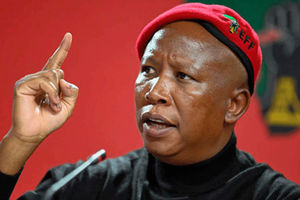How the British planned Jomo Kenyatta’s funeral

Kenya's first President Mzee Jomo Kenyatta. The Kenyatta family will no longer be commemorating his death in public. PHOTO | FILE | NATION MEDIA GROUP NATION MEDIA GROUP
In June 1968, and after President Jomo Kenyatta suffered a stroke that changed the succession matrix, British spy-cum-Cabinet Minister Bruce McKenzie approached the British High Commissioner in Nairobi, Sir Edward Peck, for some secret plot.
Kenyatta had stubbornly refused to name a successor and jockeying for the position had started in earnest, with Cabinet minister Tom Mboya positioning himself as a favourite.
One year down the line, Mboya had been shot dead and this was a signal that Kenyatta’s succession would be muddy, bloody and gory, if not handled well.
McKenzie wanted Britain to help in planning, not only Kenyatta’s funeral – which looked imminent – but also the muddled succession, which was creating tension in Jomo’s inner circle.
STATE FUNERAL
While Kenyatta had named Daniel arap Moi as his vice president in January 1967, he did not have the goodwill of Kenyatta’s inner circle and was (mis)treated as such.
Before Kenyan officials were brought aboard the funeral committee, McKenzie had held three secret meetings with Sir Edward Peck, two first secretaries and a counsellor.
It was this team that started deliberating on the timing and location of the funeral, the lying-in-state, the coffin and transport.
In one of his notes, McKenzie said that “adequate preparations should be made for a first-class State Funeral which the world would expect on Kenyatta’s death. If carried out efficiently and with dignity, it will contribute to Kenya’s prestige abroad and to political stability at home.”
LAW AMENDED
On Wednesday, June 19, 1968, McKenzie, having polished everything with the British, decided to call for a meeting with Vice President Moi and Defence Minister Njoroge Mungai, who was Kenyatta’s nephew and physician.
Records show that Charles Njonjo was set to appear but did not. Six days later, the Constitution was amended to provide that the President would in future be elected by popular vote and that, should the President die or become incapacitated in office, a general election to choose his successor must be held within 90 days.
It was also held that within those 90 days, the vice president would be acting president and would organise the elections.
Bruce Greatbatch, the Deputy High Commissioner in Nairobi, was thrilled by the inclusion of Dr Mungai in Moi’s circle.
He hoped that this would help in the planning since it would increase Moi’s confidence in Dr Mungai.
He told Michael Scott of the Foreign and Commonwealth Office that “the omission of Mungai has always been a weakness in the system and this reconciliation is a valuable achievement”.
MOI-MUNGAI SECRET
By having Moi and Dr Mungai share a secret – and in a meeting that went on for five hours - the British hoped this rapport would also help them manage the transition, with the help of Bruce McKenzie.
What Moi and Mungai did not know was that McKenzie had been tasked to ask the two to approach the British High Commission for assistance and they thought the British had nothing to do with the first meeting.
It was Bruce Greatbactch who was in correspondence with McKenzie, and he wrote to Mr Scott of FCO on June 26, 1968, who replied saying that “we shall get to work here and give all the help we can”.
The High Commission had been asked to provide details of British State Funerals and they asked their Ministry of Public Buildings to design a special catafalque for Kenyatta.
A catafalque is a raised bed where Kenyatta’s body was laid in state. But whether this came from the UK is not clear.
The gun carriage was also suggested by the British civil servants and they knew that since Kenya did not have one, it would be provided by London, thus giving them a central place in planning Jomo’s funeral which – and they said as much – would be held six days after Kenyatta’s death.
MILITARY AID
Actually, this early planning explains why everything was choreographed, including dirges, and fell into place.
In August 1968, McKenzie flew to Britain. His mission was to purchase Kenyatta’s coffin after consultations with the British High Commissioner in Nairobi.
It was here that he went to Lord Chamberlain’s office, the conduit of communication between The Queen and The House of Lords, and he was introduced to the three officials who would be planning Kenyatta’s funeral in London.
These were Kenneth Newis of the ministry of Public Works, coffin maker and embalmer John Kenyon, and Lieut Col John Johnston of Lord Chamberlain’s office.
The remnants of the British military in Kenya also started playing an active role in planning Jomo’s funeral, led by Col J.R. Anderson – the most senior British military official and who acted as adviser to the Ministry of Defence – then under Dr Mungai.
In essence, and with Dr Mungai in the picture, they would provide all the leg work.
BURIAL REQUIREMENTS
In one of his now declassified letters to the Kenyon funeral home, Col Anderson suggested that the coffin should be made of Meru Oak and should be of Aston design, with silver oxidised handles and zinc-lined.
He also requested for a death mask of the president in a letter dated October 1968.
He wrote: “This mask should be made to include head and shoulders so that it can be fixed inside the casket over the President for permanent display and hermetically sealed at the time the casket is to be disinterred and transferred to the shrine.”
The organisers also reached out to morticians, who would handle Kenyatta’s body. These, including a mask maker and bearer party trainer, were instructed to be ready to fly to Kenya on the first available plane.
But things did not go as planned and the waiting was rather long. While they had thought that Kenyatta would die soon, it took another 10 years.
But the Kenyatta Secret File remained at the top priority desk of the East African Department of FCO.
ATTENDANCE LIST
In 1973, the EAD revisited the matter and firmed plans on who would be invited for the funeral, the crafting of the condolence messages and again reported that the embalmer had been “fully briefed and ready to move”.
Unknown to many, it had been recommended as early as 1970 that either Prince Phillip or Prince Charles would attend the funeral – since the Queen would not attend.
A communication from the palace had noted that the appearance of the Queen at such an event would create a precedent for royals to attend funerals of Commonwealth heads of State.
While EAD argued for special treatment for Jomo, this was never agreed upon by the time Kenyatta died in August 1978.
But McKenzie did not witness the arrangement he had set in motion after he was assassinated in May 1978.
This left British allies Njonjo, Mwai Kibaki and Moi as the key personalities to manage the transition.
MOI IN CHARGE
However, not all plans went as plotted. A former superintendent of cemeteries in Nairobi, Frank Clayton, was called to help organise the burial and he came with an embalmer, Allan Sinclair.
In Nairobi, it was Brigadier Cromwell Mkungusi who would handle the ceremony with assistance from the British.
Kenya, as expected, requested the gun carriage and 50 rounds of blank ammunition. Also flown to Nairobi was Major Mather, who had played a key role in organising Winston Churchill’s funeral.
With Moi having an upper hand in the planning of the funeral – and having waited for this day for 10 years – he seemed like a genius when chairing his first Cabinet meeting whose agenda was on Mzee’s burial.
Moi was also able to work with senior officials, and this rapport to give Jomo a State send-off gave them confidence that, after all, he was a good man.
What the British did not agree on was who was to foot the funeral bill. The Ministry of Defence was left bickering with EAD on who would pick the £500 bill in a dispute that almost saw Kenyans billed.
Eventually, MOD reduced the figure to £184 and FCO paid £84. It was this preparation that saw the UK have a central place in Moi’s government.
***
Postscript: President Uhuru Kenyatta has announced that the family will no longer be commemorating Jomo Kenyatta’s death in public.
What Kenyans have been asking is for the mausoleum to be opened to the public. We cannot keep Jomo Kenyatta away from his people, even in death. It is not right. It is not fair.
[email protected] @Johnkamau1




